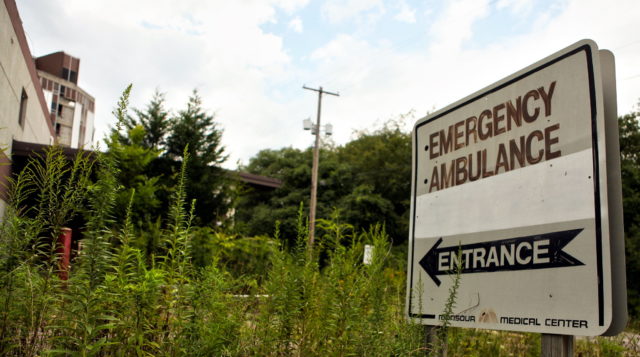Four brothers, who also happened to be doctors as well, founded a medical center on the outskirts of Jannett, PA in 1952.
The siblings, named Howard, Roy, Robert, and William Monsour, set up a clinic with only six beds in a house that had been a stagecoach stop in 1783.
By 1958, the medical center was expanded to 100 beds thanks to donations from the community.
In 1971, an 11-story round tower was built, which increased the capacity to 250 patients. That same year, a medical academy was established at the Monsour Clinic where lecturers could give presentations on various medical topics. The clinic became officially known as the Monsour Medical Center.
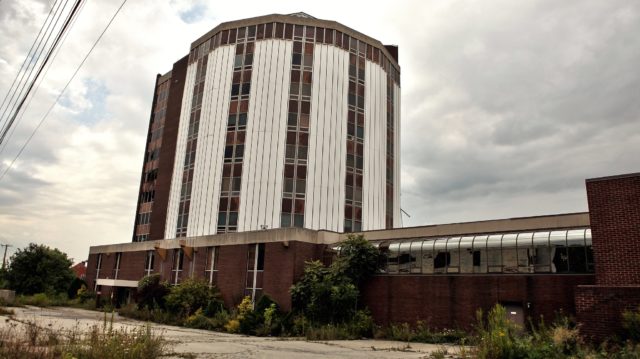
In 1975, the founders transferred the entire complex to a non-profit organization, the Monsour Medical Foundation Inc. This move was to try and distance the Monsour family from the hospital’s management.
In 1979, the hospital faced an investigation by the state which led to lawsuits and financial problems. During the litigation, Dr. William Monsour admitted to being guilty of defrauding Medicare/Medicaid by filing false claims. The two parties entered into a plea bargain.
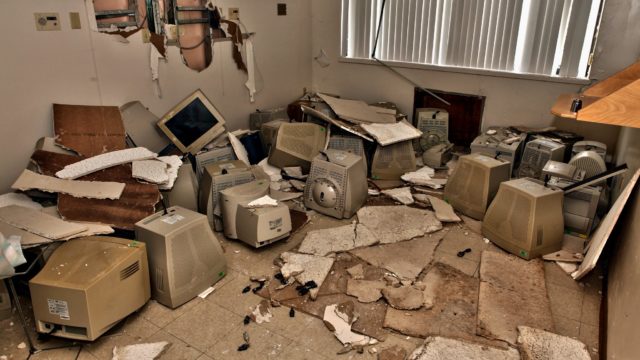
The medical center filed for bankruptcy protection in 1980. It continued to operate in a state of bankruptcy until 1988.
In 1989, a reorganization plan provided for $19 million worth of bonds to be issued in the hope of settling all outstanding debts. However, the medical center continued to face financial problems that again led to bankruptcy in 1991.
Litigation was also ongoing around this time, with the brothers pitted against each other. Howard wanted his brother William removed as a medical director because it had come to light that William had defrauded the insurer Keystone Medical Services by using money to fund new clinics, leading to about $1 million worth of unpaid medical bills.
In the early 1990s, Howard Monsour purchased the previously issued bonds for a discounted price of $3 million. But when he was unable to keep up repayments, the medical center filed for bankruptcy a third time in 2001. At this point, it had $1 million in liabilities.
The Monsour Medical Center also owed $250,000 in back taxes. It turned out that the hospital had been using the unpaid tax money to cover basic operating costs. A settlement plan was approved, leading to the hospital coming out of a bankrupt state by 2003.
Richard Adams was the general director at the time and he immediately proposed changing the name of the clinic to the Doctors Hospital of Westmoreland County.
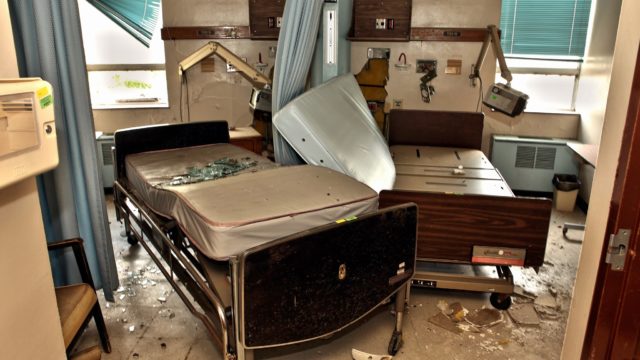
He hoped this would distance the institution from its bad reputation and history of litigation. However, all his proposals were ignored, and he decided to resign in January 2004.
Not long after his resignation, the State Department of Health revoked the hospital’s two-year operating license, substituting a six-month provisional license instead.
Any institution which received four of these licenses in a row would face serious consequences.
In July 2004, the hospital’s pain clinic was closed down after two doctors were fired for planning to set up their own rival pain clinic elsewhere.
The loss of this clinic led to further financial instability for the hospital so that in the fall of 2004, the institution declared bankruptcy for the fourth time. At that time, the medical center had debts of $40 million.
Management planned to increase revenues by creating a new program in the field of cardiology and geriatrics. Things seemed to be going in the right direction when a court dismissed the bankruptcy case after an anonymous donor provided the hospital with $2.5 million.
However, the hospital hit a major setback when Highmark Blue Cross Shield withdrew its services because its bills had not been paid for some time. Shortly after that, the hospital was issued with its fourth provisional license – the final one permitted.
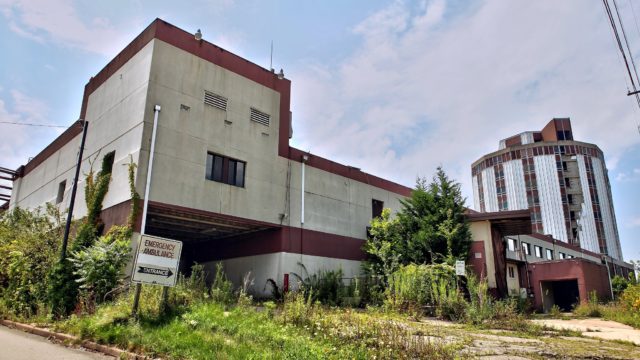
In an attempt to keep the hospital open, the management team sent a memo to all doctors in November that year, giving them an option to buy a stake in the hospital in return for being able to set up their own clinics within the tower.
However, it was too little too late as a month later, the Pennsylvania Department of Health conducted two inspections at Monsour Hospital.
Violations were identified in relation to the safety and confidentiality of patients as well as in the control of the drugs.
In January 2006, another inspection showed the hospital to have seven regulatory violations – and it only had seven patients at the time.
The state offered a limited operating license that would mean that the hospital couldn’t perform surgeries or administer anesthesia, and the hospital management chose to shut down rather than accept such a license.
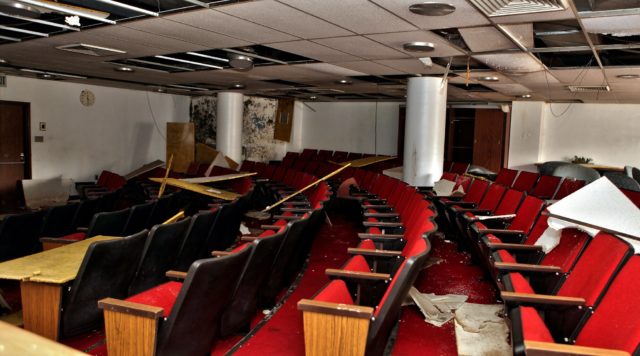
As a result, on December 15, 2006, the medical center closed its doors forever.
The empty building began to attract vandals. The site was in a particularly worrying state because the owners had simply locked the doors and walked away, meaning that there was a host of abandoned patient files, medicine, hazardous waste, and medical equipment left behind.
In 2011, there were two fires in the clinic tower, although they resulted in little damage to the abandoned complex. The locals started to refer to it as the “Monsour Monstrosity.”
The city was unable to obtain permission from the Monsour family to demolish the facility, but in 2014 it was able to purchase the property through a judicial sale for about $15,000. The estimated cost of the city demolishing the institution was between $25,000- $1 million, while it cost them only $25,000 a year to secure the property and keep vandals away.
Eventually, the city applied for the right to demolish and receive a grant of $1 million from the state. This resulted in the building being demolished in 2016. The subsequent cleanup took many weeks.
A big thank you to Darryl Moran for providing photographs of this abandoned place. Check out his photography Facebook account and Flickr page for more photos and locations.
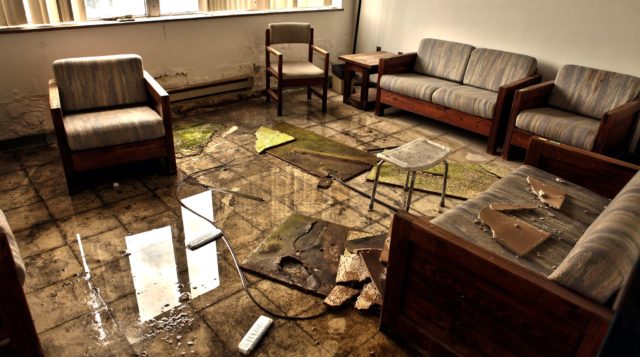
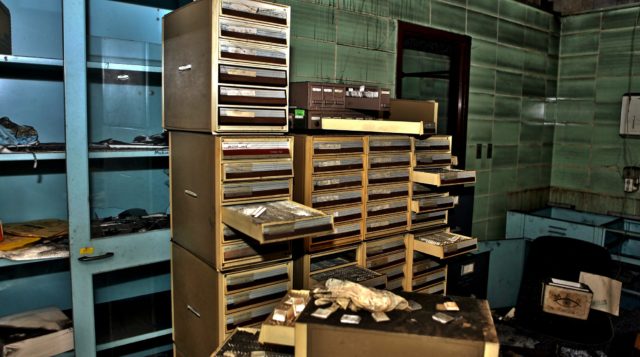
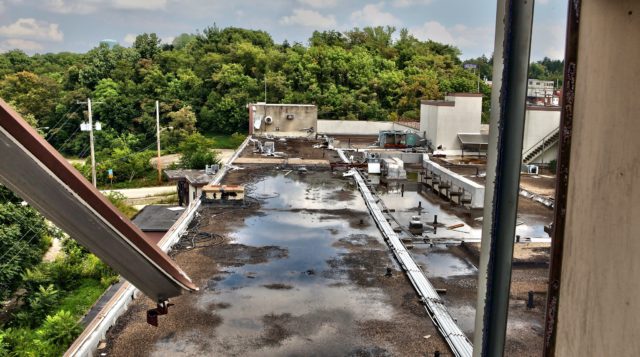
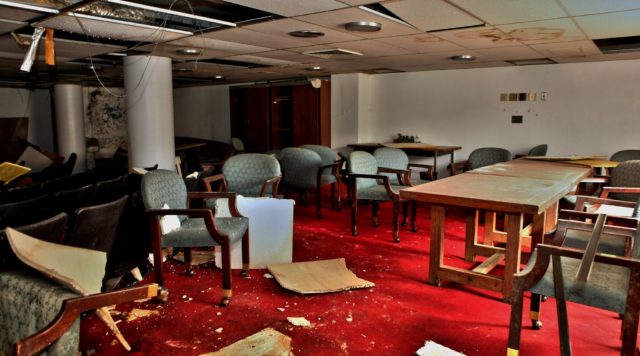
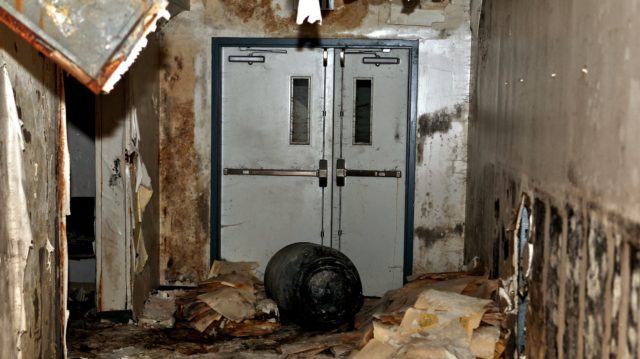
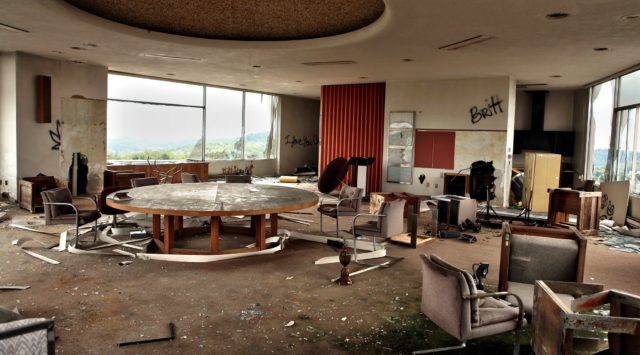
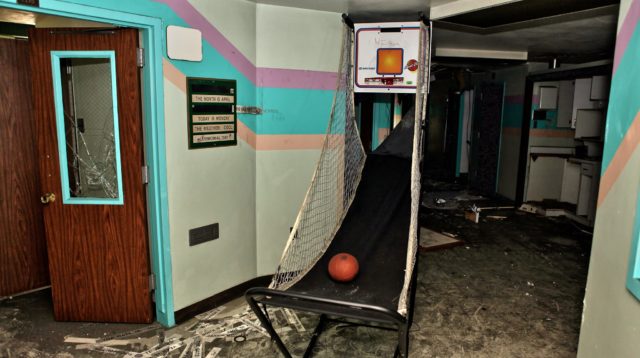
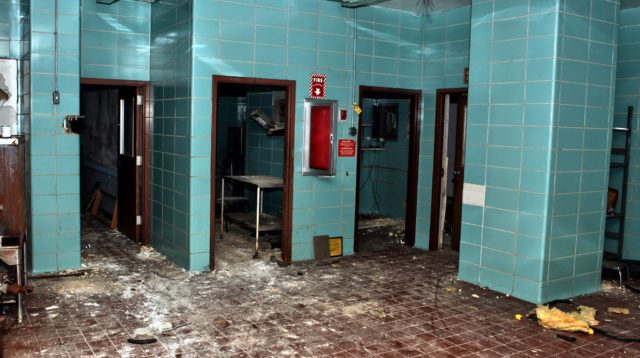
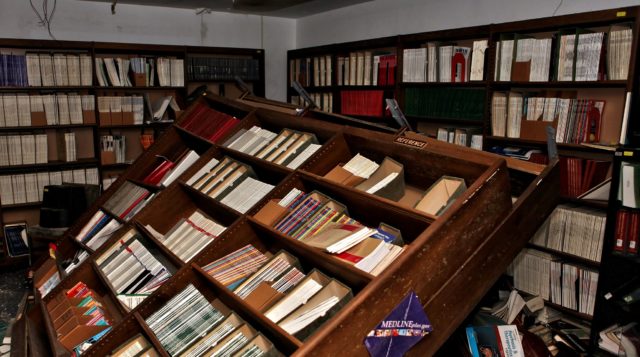
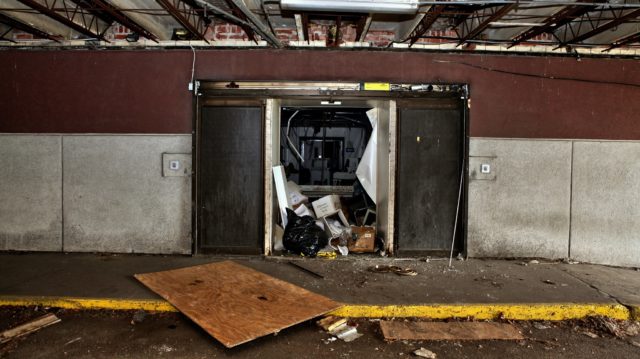
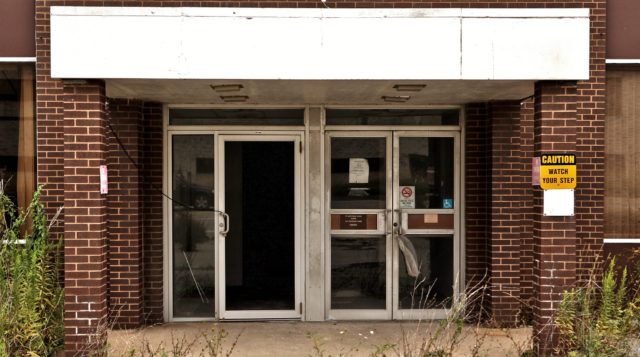
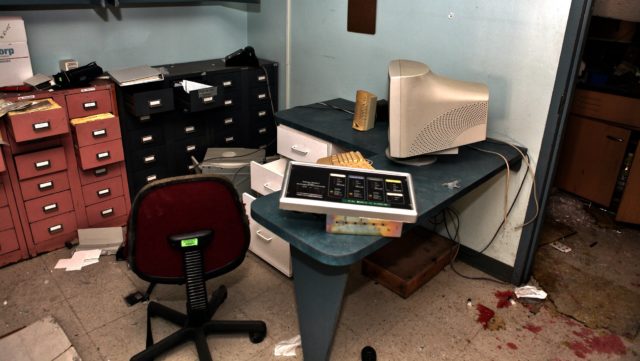
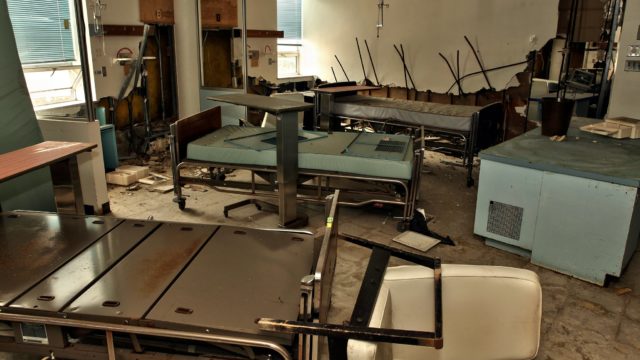
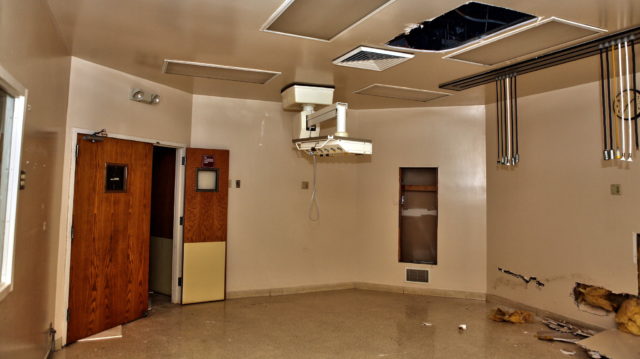
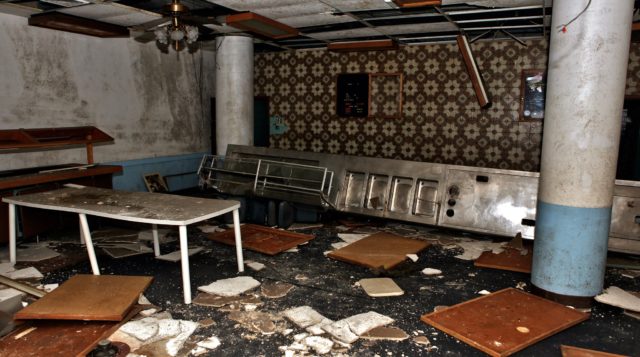
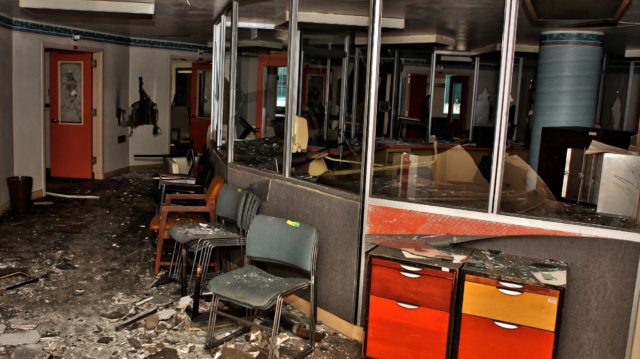
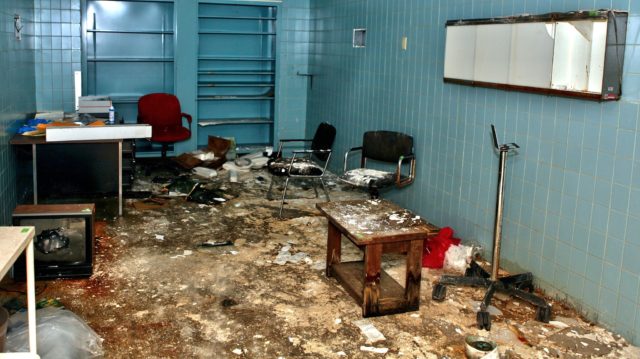
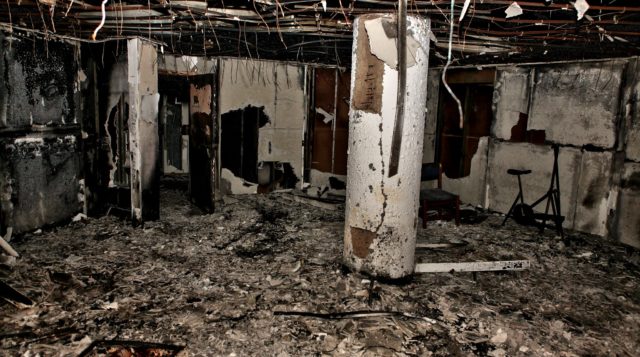
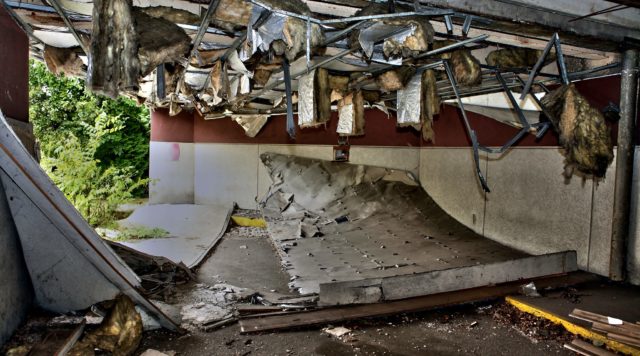
Castle Stalker: the castle from Monty Python and the Holy Grail
